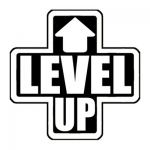- Like
- SHARE
- Digg
- Del
- Tumblr
- VKontakte
- Flattr
- Buffer
- Love This
- Save
- Odnoklassniki
- Meneame
- Blogger
- Amazon
- Yahoo Mail
- Gmail
- AOL
- Newsvine
- HackerNews
- Evernote
- MySpace
- Mail.ru
- Viadeo
- Line
- Comments
- Yummly
- SMS
- Viber
- Telegram
- JOIN
- Skype
- Facebook Messenger
- Kakao
- LiveJournal
- Yammer
- Edgar
- Fintel
- Mix
- Instapaper
- Copy Link
As a marketer, I’d like to believe all my marketing efforts are high-impact.
Unfortunately, that isn’t always the case.
Consider the blog post that resulted in 25 views, and 0 leads — or the Facebook campaign that totally flopped, with a much lower ROI than expected.
Of course, high-impact marketing is any marketer’s goal. High-impact marketing means you’re getting the biggest bang for your buck, and that your time and resources are having a strong, positive impact on your business’ bottom-line.
But high-impact marketing is easier said than done. Here, we’ll explore what high-impact marketing is, examples of high-impact marketing, and finally, how you might maximize your own marketing efforts for highest possible impact.
Let’s dive in.
What is high-impact marketing?
High-impact marketing is any marketing efforts that have significant impact on your business’ bottom-line.
High-impact marketing can range depending on your business goals and industry — additionally, high-impact marketing doesn’t necessarily correlate with the amount of money you spend.
For instance, perhaps you create a low-budget YouTube video that results in thousands of views, and a 15% lead conversion rate. That’s high-impact, regardless of the amount of money you put into the video.
Fortunately, this means high-impact marketing doesn’t have to break the bank to be effective.
Of course, which types of marketing will have a high impact on your bottom-line depends on your unique marketing goals. For instance, if your goal is to increase brand awareness, perhaps you find Instagram has the highest impact. Alternatively, if your goal is to establish thought leadership, perhaps you find you have higher impact by guest posting on various blogs.
Examples of High-Impact Marketing
To fully understand the definition of high-impact marketing, let’s consider a few examples of high-impact marketing in-action:
- A YouTube strategy that increases leads for your company while reaching new audiences and increasing brand awareness.
- A podcast advertisement that increases sales for your new product.
- A PR campaign that increases positive perception of your brand, as measured by a public perception survey.
- A blog post with a 10% conversion rate, higher than industry standards.
- An Instagram post that receives high engagement rates and increases your account’s follower count.
- An online co-marketing webinar that enables you to reach new networks via your partner’s channels.
There are many more, of course, but ultimately, these examples are meant to demonstrate just how wide-ranging high-impact marketing can be.
High-impact marketing will depend on your goals, industry, and the types of marketing best-suited for your brand. What results in a high ROI for one company could be a waste of time for another.
Next, let’s dive into some specific high-marketing techniques you might implement depending on your goals to drive lasting results for your company.
How to Maximize Your Marketing’s Impact
1. Ensure you’re targeting the right audience.
Best for: Brand awareness, increased leads.
To create the highest-impact marketing campaigns, it’s critical you do your research to ensure you’re targeting your ideal audience.
Of course, your audience will vary depending on your goals. For instance, perhaps you’re putting together an online event targeted towards entrepreneurs. If that’s the case, you’ll want to target a wide audience by identifying any social media users who’ve shown an interest in entrepreneurship. Since your goal is to get as many attendees as possible, you don’t need to get too hyper-targeted.
Alternatively, let’s say you’re looking to increase sales on a new product. If that’s the case, you don’t want to target a large audience — instead, you want to focus on a select group of people who seem ready-to-buy. In that case, you’ll want to target viewers who’ve visited a landing page for your product, or viewers who’ve clicked on an ad for that product over the last six months.
Ultimately, you don’t want to spend too much money or resources targeting people who are never going to convert, so for truly high-impact marketing, it’s critical you take the time to target the right audiences.
Take a look at How to Find Your Target Audience to learn how to identify the right audience for your own goals.
2. Create a strong partnership program.
Best for: Reaching new audiences.
A partnership program, or co-marketing campaign, can help you reach new audiences, demonstrate expertise in your industry, create high-quality content for leads and customers, and so much more.
Additionally, backlinks from other companies is invaluable for SEO, so a partnership program is a win-win on all accounts.
To create a truly impactful co-marketing campaign, consider hosting a webinar with a partner, creating an e-book with a partner to share with the partner’s network and increase brand exposure, or writing a series of guest blog posts for each other’s sites.
Co-marketing campaigns can have high impact by delivering exceptional value to leads and customers. For instance, consider this actionable guide HubSpot created with LinkedIn to help viewers learn how to get the most out of their LinkedIn marketing efforts.
While HubSpot could have written its own content regarding LinkedIn best practices, it’s higher-value when it combines forces with LinkedIn. Additionally, this ebook is now shown to both HubSpot and LinkedIn networks, ensuring broader reach.
Best of all, co-marketing efforts don’t have to be high-budget. In fact, partnership programs can be incredibly cost-effective, since you’re dividing the amount of resources needed by half.
3. Publish on various social channels.
Best for: Increased brand exposure, establishing thought leadership in an industry.
Social media is one of the most effective opportunities to achieve any of your marketing goals.
Don’t believe me? Consider this: 54% of social browsers use social media to research products.
Additionally, 73% of marketers believe that their efforts through social media marketing have been “somewhat effective” or “very effective” for their business.
Best of all, social media is one of the most cost-effective marketing strategies.
Of course, a social media strategy needs to be comprehensive to be as high-impact as possible. For instance, to increase thought leadership, you might consider asking executives to post thought leadership content regularly on LinkedIn and share it with experts in the industry. Alternatively, perhaps you’ll want to post advice from industry leaders on your own Instagram or YouTube accounts.
Additionally, it’s critical you ensure you’re using the best platforms to reach the right audiences. There’s a wide variety to choose from — including Facebook, Instagram, LinkedIn, Tik Tok, YouTube, Twitter, and more.
Conduct research to find where your target audience spends the most time, and then alter your strategy accordingly.
4. Maximize referrals.
Best for: Increased sales.
Considering it costs anywhere from five to 25 times more to acquire a new customer than to retain an existing one, it makes sense that you’ll want to leverage existing customers for high-impact marketing.
The inbound flywheel is made up of three sections: Attract, Engage, and Delight. To create sustainable, long-term growth, it’s critical you enable your flywheel to reach maximum speed.
To do this, you might create a formal referral program, in which existing customers earn a discount for recommending new customers.
Additionally, you might consider encouraging current social media followers to refer new followers to your social pages. To incentivize them, you could host a giveaway — if a follower tags 3-5 friends in the comments section, they have the chance to win.
You’ll also want to ensure customers have a good experience with your brand, start-to-finish. If customers are impressed with your customer service, for example, they’re more likely to recommend you to friends for free.
Now that’s high-impact.
5. Optimize for SEO.
Best for: Demonstrating expertise, increasing exposure to new audiences.
Finally, optimizing your website, blog posts, and even social media pages for SEO is critical for long-term marketing success.
Your blog posts, for instance, will be much higher-impact if they appear in search results for related queries. Otherwise, email and social media traffic can only get you so far.
Additionally, your website will have much higher-impact on your company’s bottom-line if it ranks in the top ten search results for related keywords.
Consider, for instance, the impact your website might have on sales if prospects are able to find your company whenever they search for products or services related to your industry.
An SEO strategy is a long-term play, but it’s one of the best opportunities you have for creating content that continues to impact your bottom-line well into the future.
Originally published Dec 17, 2020 7:00:00 AM, updated December 17 2020




